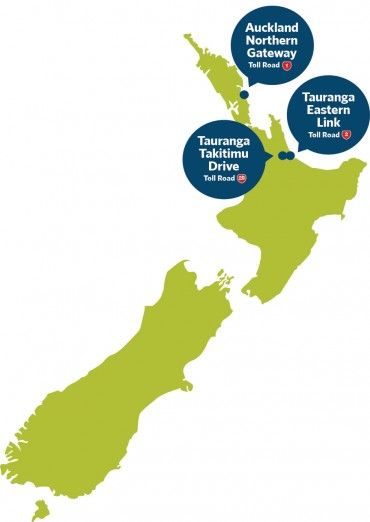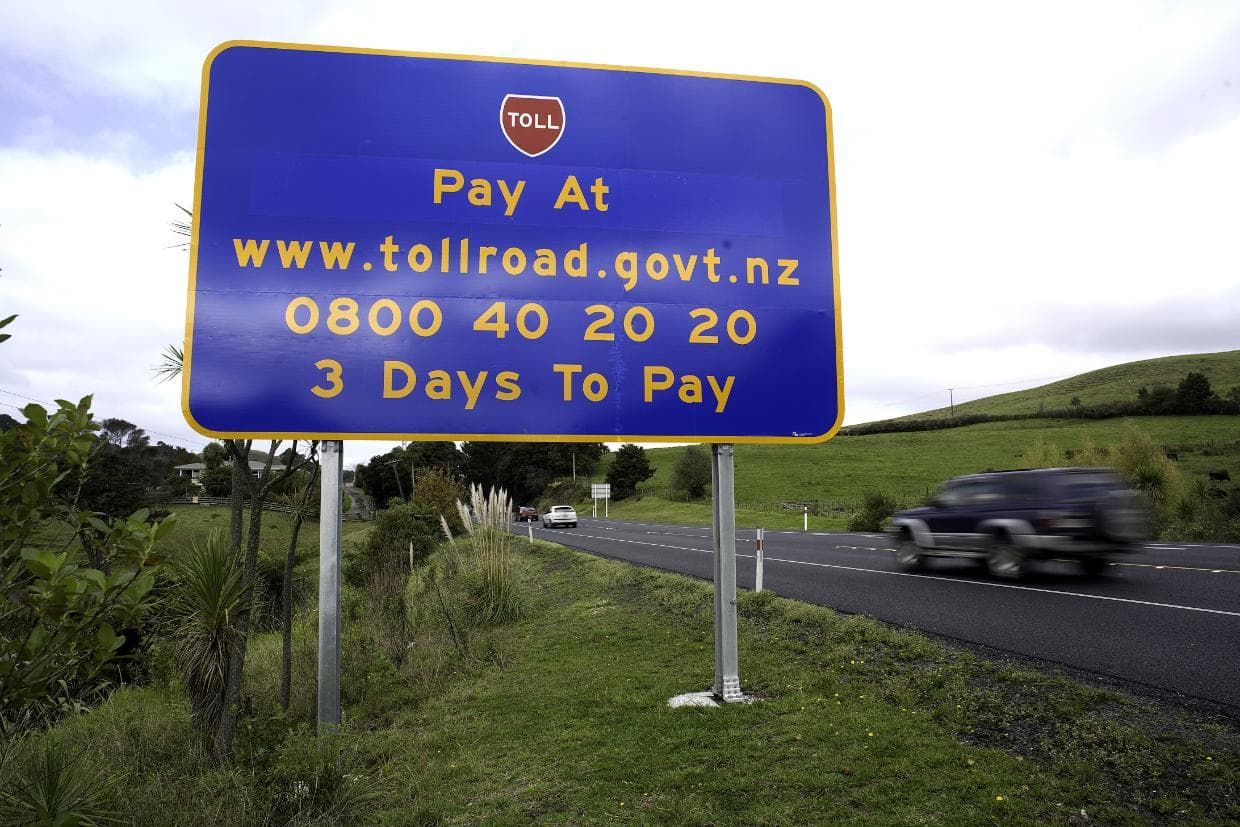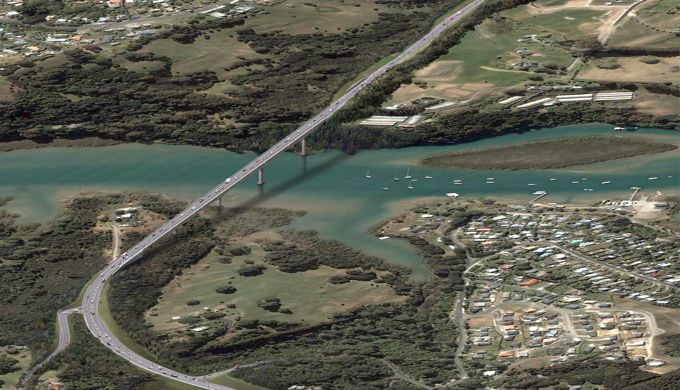Toll Roads in New Zealand: What You Need to Know
Planning a road trip in New Zealand? Whether you’re exploring Auckland’s city-to-coast routes or taking a weekend break in Tauranga, it’s worth knowing how New Zealand’s toll roads work, especially if you’re driving a rental car.
Toll roads are a small but important part of New Zealand’s roading network, designed to fund the construction and maintenance of key transport links. Luckily, they’re simple to navigate and inexpensive, as long as you know how to pay.
Introduction to NZ Toll Roads
New Zealand’s toll roads are managed by Waka Kotahi NZ Transport Agency (NZTA), which oversees the country’s state highways and road charges. Unlike in many countries, NZ tolls are entirely electronic, there are no toll booths or cash lanes. Instead, your vehicle is automatically recognised by camera, and you pay either before or after your journey.
Tolling helps fund key infrastructure that improves travel times, safety, and regional connectivity. For drivers, these roads often save 10–20 minutes compared to alternative routes, ideal for busy commuters and travellers on a tight schedule.
Locations of Toll Roads in New Zealand

At present, New Zealand has three main toll roads, located in the upper North Island. Each one offers a faster, more direct connection between major regions:
1. Auckland Northern Gateway Toll Road and Ara Tūhono
- Location: SH1 between Orewa and Warkworth
- Length: 7.5 km from Orewa to Puhoi and 18.5 km from Puhoi to Warkworth
- Toll cost: NZD $2.60 per car (as of 2025)
- Purpose: Connects Auckland to Northland via the Auckland Northern Motorway. This toll road bypasses the slower, coastal route through Waiwera and is a favourite for anyone heading north for a weekend in Matakana or Paihia.
2. Tauranga Eastern Link Toll Road
- Location: SH2 between Paengaroa and Papamoa
- Length: 15 km
- Toll cost: NZD $2.30 per car
- Purpose: Provides a quicker, safer route to Tauranga’s growing eastern suburbs and Mount Maunganui. The Tauranga Eastern Link significantly cuts travel time for Bay of Plenty residents and visitors alike.
3. Takitimu Drive Toll Road (Tauranga)
- Location: SH29 between Route K and Route J
- Length: 5 km
- Toll cost: NZD $2.30 per car
- Purpose: Offers a fast connection between central Tauranga and SH36, ideal for traffic heading toward Rotorua.
For the most up-to-date information, Waka Kotahi’s official toll road map lists all current tolls and rates, which are subject to review.
How to Pay for Tolls in New Zealand

Because NZ toll roads use a number plate recognition system, drivers must pay manually online, via phone, or through a prepaid account. There’s no need to stop while driving.
1. Online Payment
Visit tollroad.govt.nz and enter your licence plate number. You can pay:
- Before or within five days of using a toll road
- With a debit or credit card
- As a casual user (one-off payment) or through a prepaid account (great for frequent travellers)
2. Phone Payment
Call 0800 40 20 20 (NZ only) to pay your toll over the phone using your number plate and card details.
3. Pay & Go (Prepaid Account)
If you use toll roads regularly, for example, if you live in Auckland or Tauranga, you can set up a Pay & Go account to automatically charge tolls as you drive. This ensures you never miss a payment.
Tip for rental car users: Some rental companies manage tolls for you by charging the amount to your card after the trip. Always check your rental agreement or ask at pick-up if tolls are included or billed separately.
What Happens if You Don’t Pay a Toll?
If you forget to pay within five working days, Waka Kotahi will send a toll payment notice to the vehicle’s registered owner, in the case of rental cars, this is the hire company.
For rental customers, this means:
- The rental company will receive the notice and pay the toll on your behalf.
- They may then charge the toll amount plus an administration fee (usually $3–$5).
Failing to pay after this can result in additional fines or infringement notices from Waka Kotahi. To avoid unnecessary charges, it’s best to pay as soon as possible or check if your hire company handles tolls automatically.
Tips for Tourists and Domestic Travellers Renting a Car
Toll roads can be confusing if you’re not familiar with the system, especially if you’re flying in and renting a car for a short stay. Here are a few practical tips for stress-free driving:
1. Check Your Rental Agreement
Ask your rental provider, like RaD Car Hire, how tolls are managed. RaD offers a transparent, customer-first approach: clear toll information at pick-up, optional prepaid toll management, and no hidden admin costs.
2. Keep Track of Your Route
If you’re using GPS navigation (Google Maps, Apple Maps, or your rental’s built-in system), the app will usually alert you when a toll road is ahead. You can choose to avoid it or continue and pay online later.
3. Save the Toll Payment Website
Bookmark tollroad.govt.nz on your phone before you travel. That way, you can quickly check or pay after driving.
4. Consider the Alternatives
Each toll road has a free alternative route, though it’s usually slower and may have lower speed limits. If you’re on a scenic drive and not in a hurry, these routes can actually be a beautiful part of your journey.
5. Budget for Small Charges
NZ tolls are relatively inexpensive - between $2–$3 per trip for light vehicles - so it’s worth including them in your travel budget rather than avoiding them entirely.
Future Toll Road Developments in New Zealand

While there are currently only three toll roads in operation, more could be introduced in the coming years as New Zealand continues to invest in infrastructure.
Potential future projects include:
- Auckland’s Penlink (SH1 to Whangaparaoa Peninsula): expected to open in 2028 and likely to operate as a toll road.
- Transmission Gully (Wellington): while currently untolled, the possibility of tolling in future has been discussed by local authorities.
- Hamilton Southern Links and Tauranga Northern Link: both are being considered for long-term tolling to fund upgrades.
According to Waka Kotahi’s 2024–2027 National Land Transport Programme, tolling remains a key funding mechanism for new highways that improve connectivity between major urban centres.
Why Understanding NZ Toll Roads Matters for Rental Car Drivers
For short-term travellers and domestic residents alike, tolls are an easy-to-miss detail that can lead to unexpected fees if not managed properly.
Choosing a Kiwi-owned company like RaD Car Hire ensures you get clear guidance on local driving requirements, including toll roads, fuel policies, and parking rules. With 20+ branches nationwide, RaD helps make your driving experience simple, local, and stress-free.
Frequently Asked Questions
1. Do I have to pay tolls if I’m driving a rental car?
Yes. Even though the car belongs to the rental company, you’re responsible for tolls incurred during your hire. Check whether your rental provider (like RaD Car Hire) offers an automatic toll payment system.
2. Can I avoid toll roads in New Zealand?
Yes. Every toll road has a free alternative route, though these are usually slower and may pass through towns or rural areas.
3. How long do I have to pay a toll?
You have five working days to pay after using a toll road. After that, a notice is sent to the vehicle owner (your rental provider).
4. Are there any toll roads on the South Island?
Not currently. All three toll roads are located in the North Island, primarily around Auckland and Tauranga.
5. Can international visitors pay NZ tolls from overseas?
Yes. Payments can be made easily through the tollroad.govt.nz website using an international credit card.
Final Thoughts
Driving in New Zealand should be simple, and it is, as long as you’re aware of small details like toll roads. Whether you’re a Kiwi heading to the Bay of Plenty or a visitor exploring the North Island, a little preparation goes a long way.
With RaD Car Hire, you’ll enjoy clear pricing, quality vehicles, and friendly local advice, so you can focus on the open road, not the fine print.